I’ve been looking at USB4 M.2 enclosures, specifically ones with the ASM2464PD chipset to house an M.2 drive. My original plan was to use it for booting Windows, so I could keep the internal drive in my laptop partitioned entirely for Linux, but still plug in an extra drive if I needed Windows for the occasional game or other software that isn’t available.
Now, out of my two computers, neither of them can boot from Thunderbolt or USB4 devices. One is a Lenovo T14s Gen3 with an AMD 6850U and the other is an ITX build with an Intel JHL7440 controller. So that idea has been binned, although I still wonder if booting from TB devices is a thing at all, but I believe it should be possible, at least on a theoretical level. However, I think the need for such a feature is probably so miniscule that no manufacturer has bothered to implement it and it might also need support on the OS side.
Enclosure #1
So, the first enclosure I purchased was an Orico ORICO-CNM2-U4. It was pretty nice, but it had a fan. With no speed control. That tiny 30mm(?) blower-style fan was audible over pretty much everything, and since this is something I would like to use at home or in other quiet spaces, that was a no-go. So I promptly sold it on ebay.
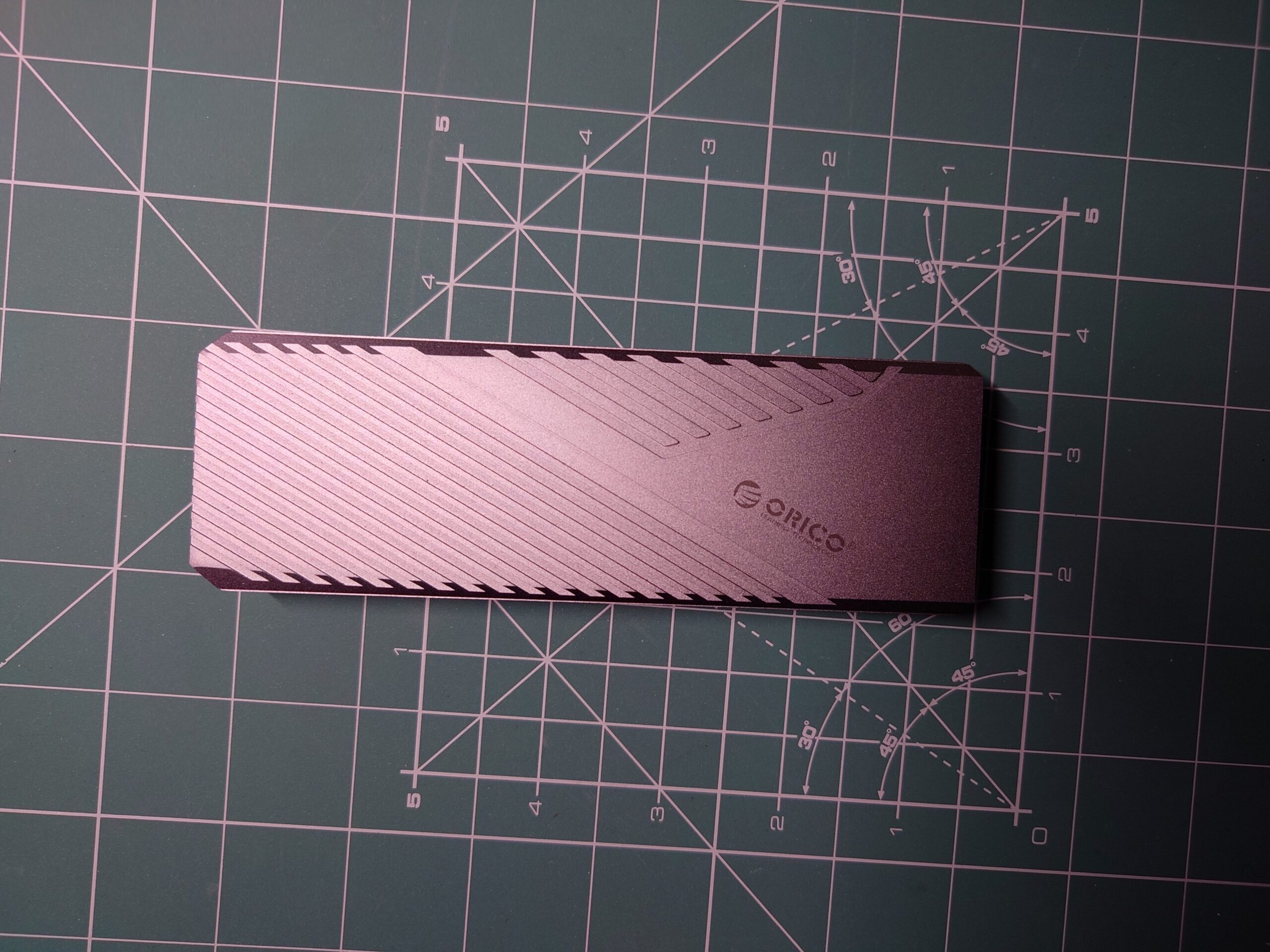
My other complaint would be the size. I think it was just overly large, unwarrantedly so. It had a fan and didn’t really need the thermal mass. I did use it for a while with the fan’s blades jammed with a piece of foam, such that it didn’t turn and it seemed to be more or less okay temperature-wise, but that was only a temporary fix. And if I was nitpicking, the enclure itself felt like some of its edges were quite sharp, such that it could easily scratch other things if I put it, say, next to a mouse or something else in a bag. Yes, ideally it should go in its own pouch, but that doesn’t always materialize in real life.
Which means I had to look for an alternative.
Enclosure #2
This alternative is the main topic of the article. The Qwiizlab ES40UR USB4 enclosure, also sold under the Hagibis and Colorii brands. Same ASM2464PD chipset, same M.2 2280 drive size limit, but a very different – most notably – fanless design. Yes, I literally replaced the thing just to get rid of the fan.

Of course, the fanless design does make it physically larger, but not significantly so. It is somewhat wider, but also a bit shorter, since there is no need to house the fan in one end. There is more weight to carry around, but this isn’t something that will go in my bag very often. For that, I have a little JMS583-based ITGZ enclosure with a 1TB Samsung PM991a, a tiny 2230 drive.
The drive itself is nicely machined, no sharp corners, and the finish and looks exude more quality. The added weight and rubber feet ensure it won’t slide around when placed down. The light has two colours to indicate the connection type (USB3/4), which can be useful if using cables of unknown quality that may not negotiate the speeds I expect from the USB port. The bundled cable is unbranded, but seems to be of rather good quality, albeit it’s only about 25cm long.
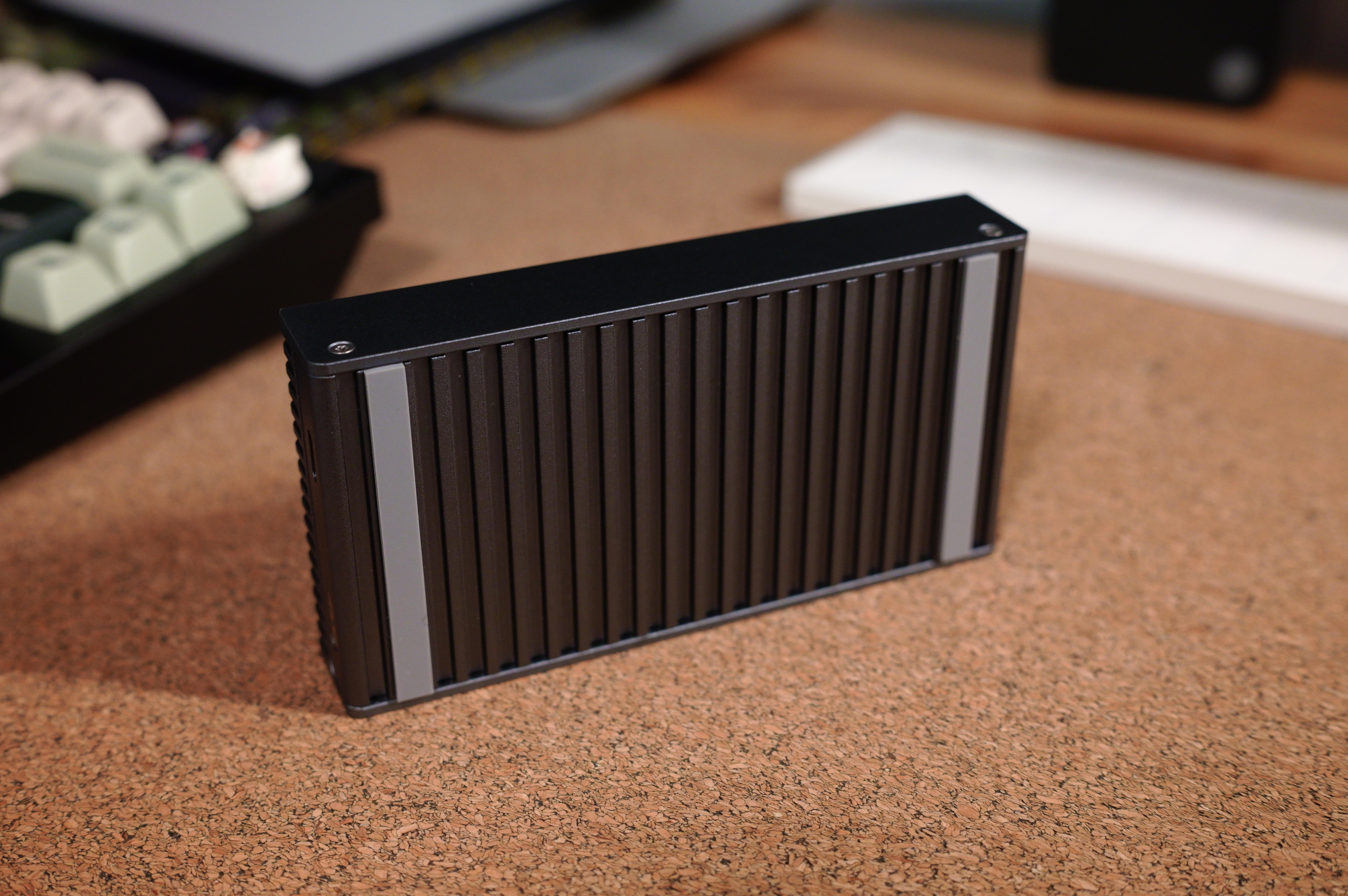
Internals
It comes with two sets of two thermal pads, one for the drive and one for the ASM2464PD chip. They are both on the top of the PCB, so make contact with the heatsink on the top of the enclosure. There is also a thermal pad between the back of the ASM2464 and the bottom, which probably conducts a bit of heat to the bottom side as well.
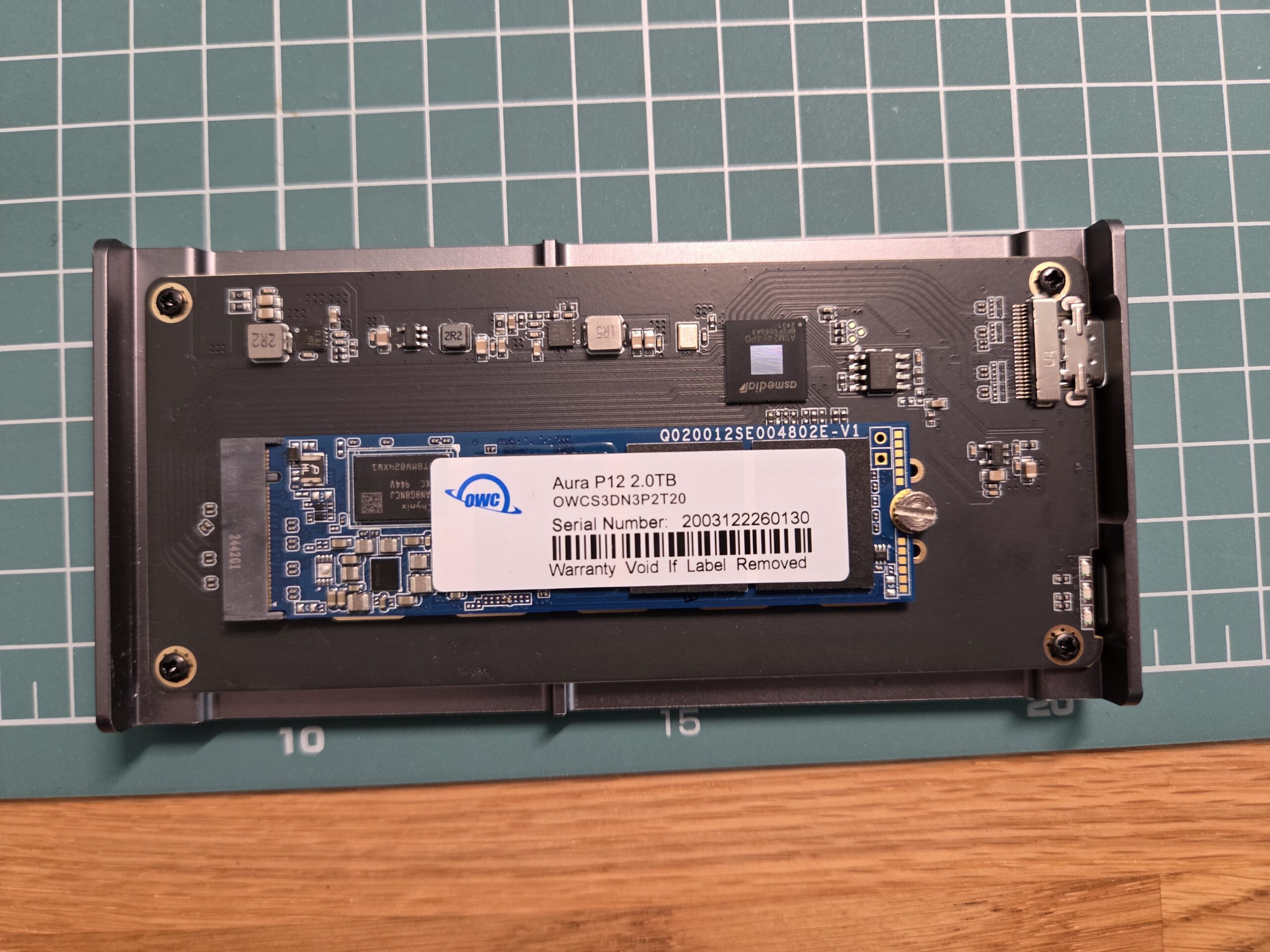
Speeds
Speeds have been measured with a 1.92TB OWC Aura P12 SSD, which is a PCIe 3.0 device, so it probably isn’t able to utilize the full speed of the enclosure. The host was the AMD 6850U powered T14s with Fedora 41.
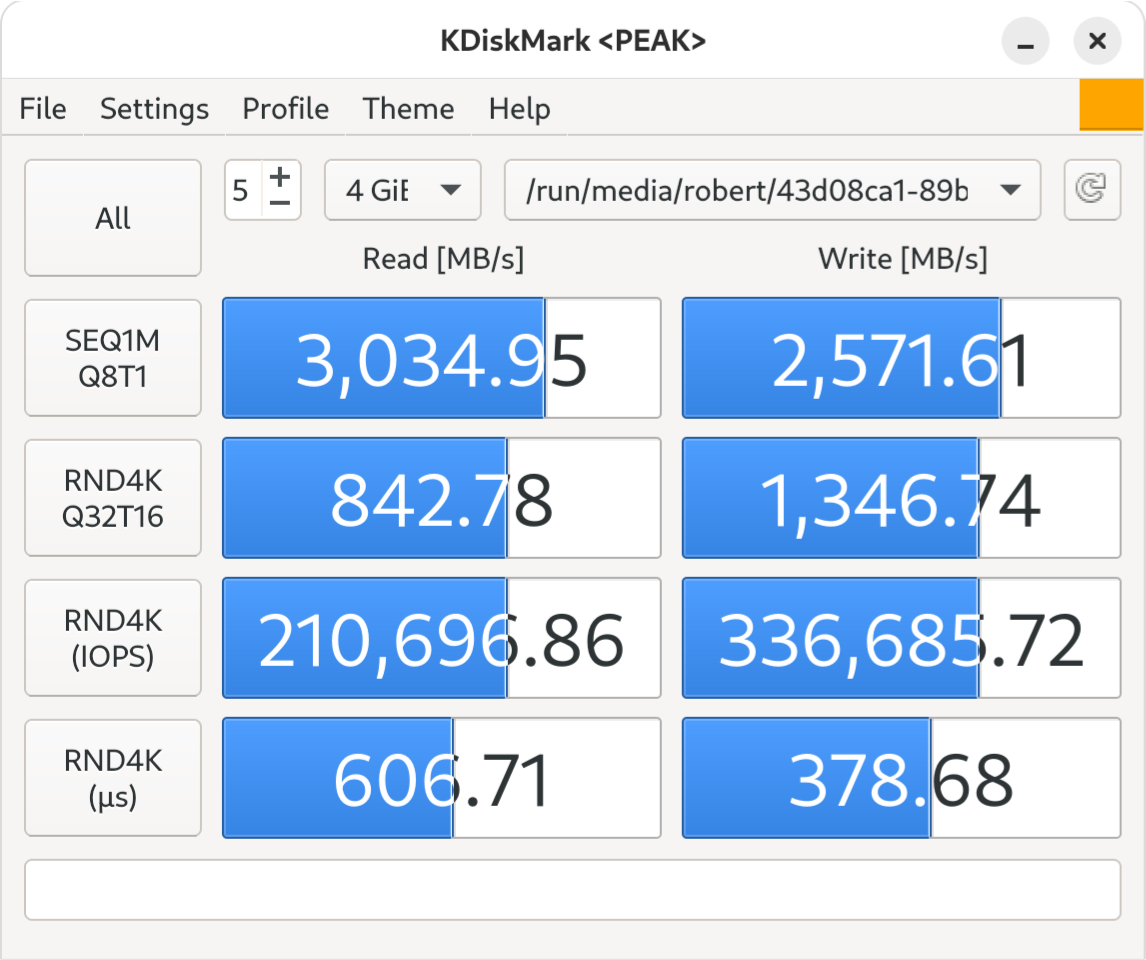
On USB4, we get over 3GB/s, which is nice, but as mentioned before, the enclosure could go up to 3.6GB/s with a PCIe 4.0 drive.
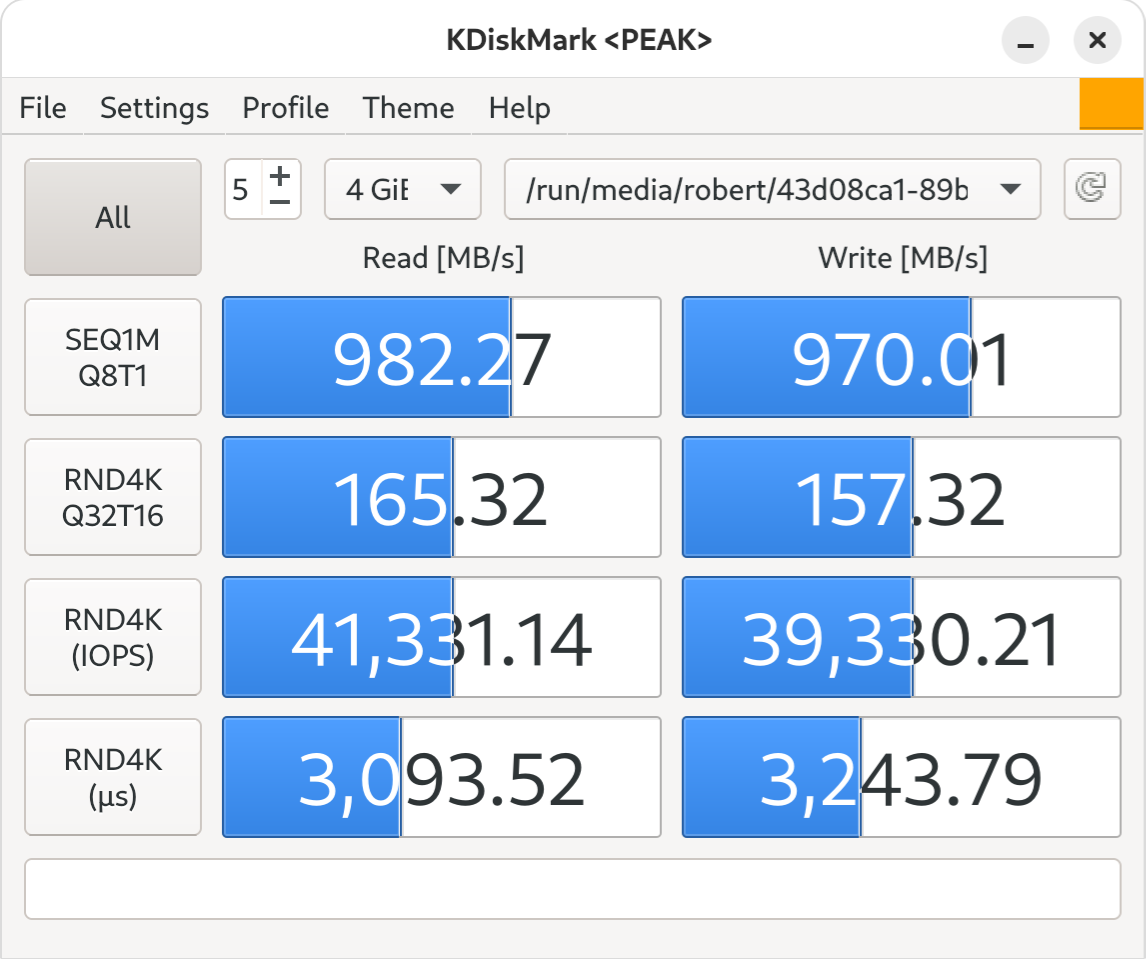
On USB3, we do get the advertised 10Gbps, or nearly 1GB/s speeds, but with highly degraded IOPS and latency due to the protocol overhead of USB.
Power and thermals
What I noticed by the very scientific method of placing my hand on top of the heatsink after extended use, is that the drive seems to get noticeably warmer in USB4 mode, which makes sense, since that establishes a significantly faster link between the devices. This did get confirmed using a USB-C power meter, and the results are shown below.
| Power in watts | USB3 10Gbps | USB4 |
| Idle | 2.15 | 3.45 |
| Peak read | 4.79 | 7.83 |
| Peak write | 4.42 | 8.51 |
And speaking of power and thermals, I’ve heard that the JHL7440 is a bit better in terms of consumption, but it is slightly slower and does not include a USB3 controller, so the devices that use it need to add a separate NVMe to USB chip, which adds cost and complexity.
Enclosure #3
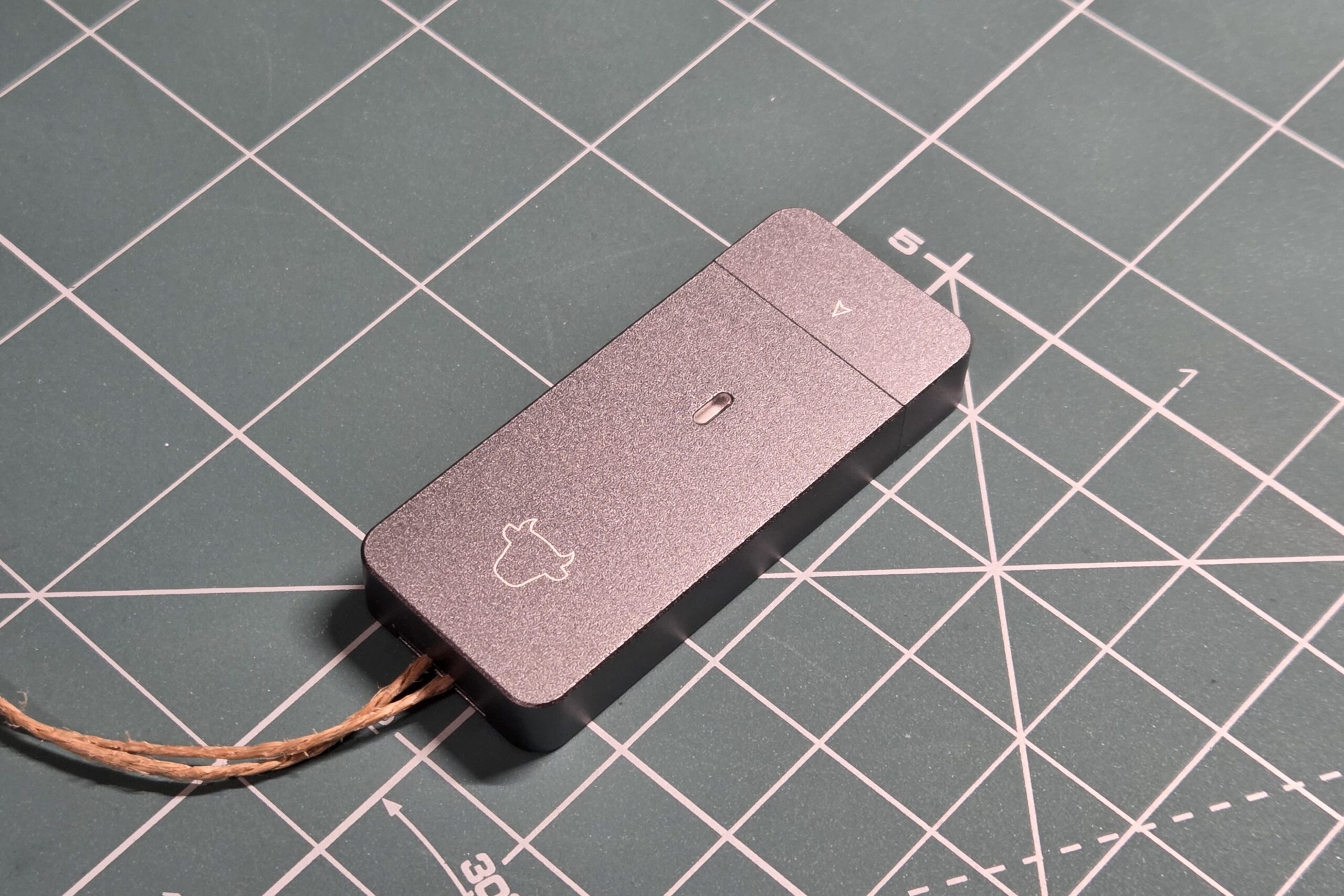
This is more of a bonus round, since I wanted to add the previously mentioned ITGZ enclosure with the JMS583, even though it isn’t USB4 compatible, which means it’s going to be capped at 10Gbps.
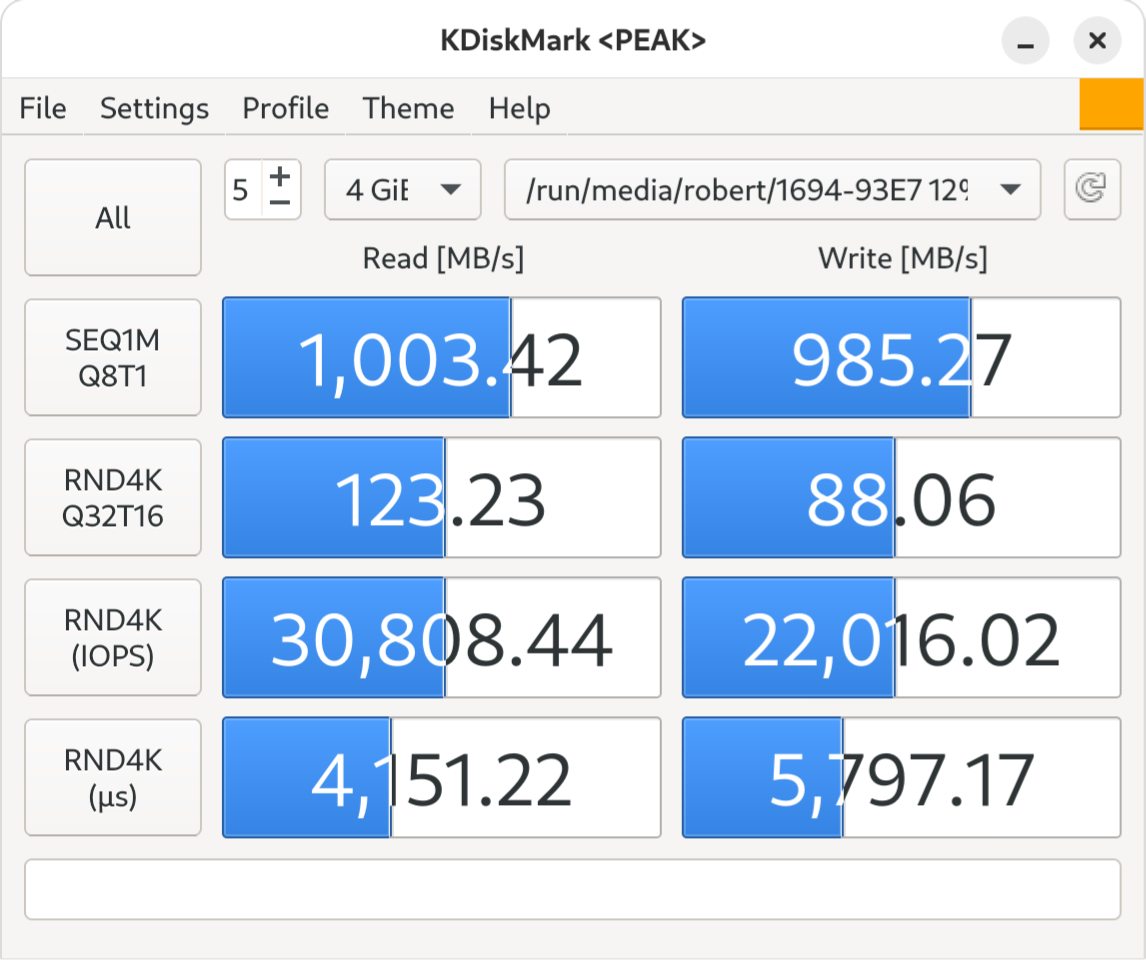
The sequential speeds slightly outpace the ASM2464, which is a surprise, but random performance is still behind. The power consumption with the 1TB Samsung PM991a, which is a DRAM-less drive is notably less than that of the previous enclosure. Of course, it’s still way more than a purpose-built USB drive.
| Power in watts | USB3 10Gbps |
| Idle | 1.53 |
| Peak read | 3.83 |
| Peak write | 4.08 |
One reason why I particularly like it is that it works amazingly well with my Sigma fp L. It’s fast enough to record 12-bit Cinema DNG in 4K30p. I haven’t tested it for more than 5 minutes, so I’m a bit unsure about whether it would overheat when used for more extended periods, but I can always slap on an extra aluminium heatsink. It fits straight into the USB port of the camera and I find it very convenient to be able to just plug it in, record, and then offload the footage straight to my PC. I have not tested its effect on the battery life, but I am certain that it would shorten it when compared to using an SD card.
I have another JMS583 enclosure with a USB-A port and a 2242 drive, which is a bit larger, but the 2242 drive does have DRAM cache, which helps the random write speeds a bit. But they are so similar that I somehow managed to measure a read speed that is identical to the previous enclosure and drive combo.
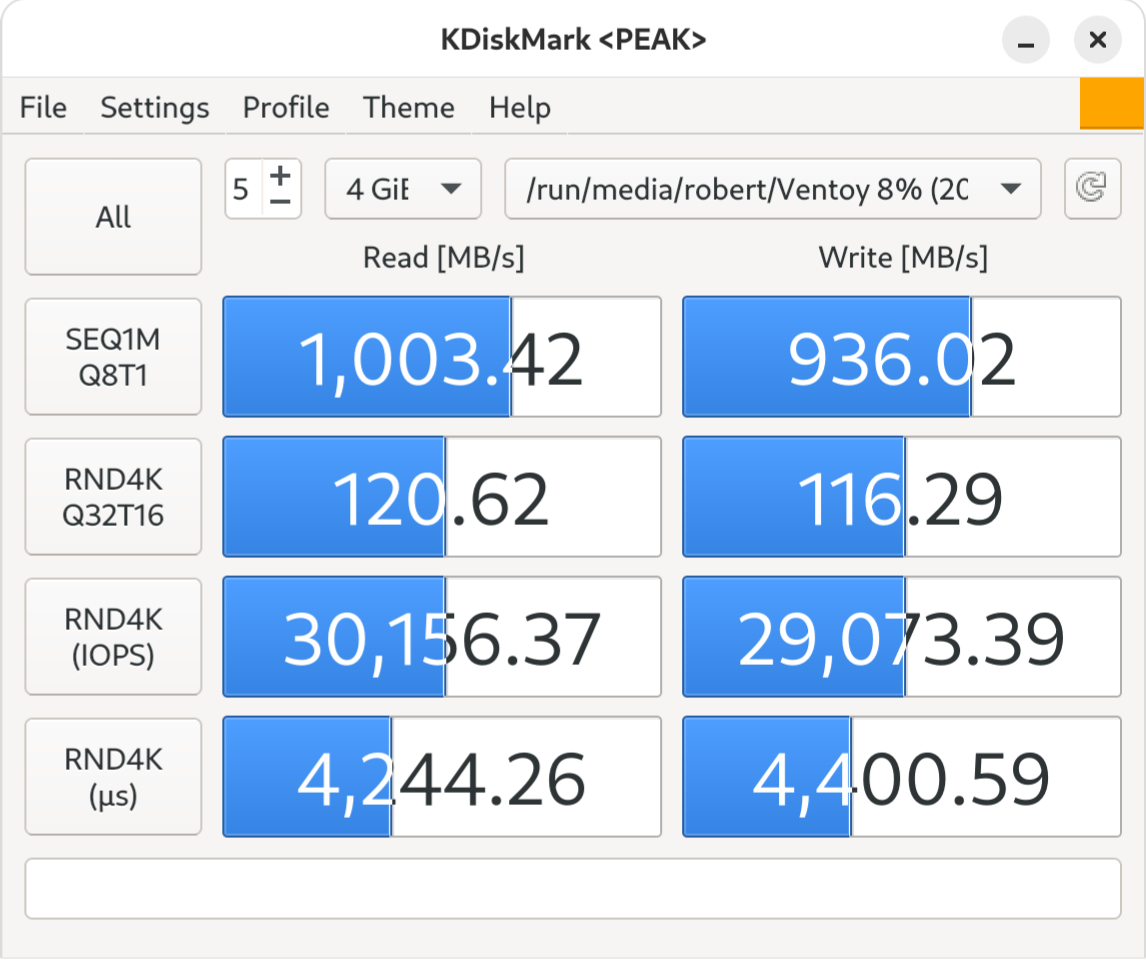
I mainly use it with Ventoy to re-image computers. It works most of the time, but some PCs don’t like booting from it, so I generally like to have a backup drive with me, just in case.
Leave a Reply